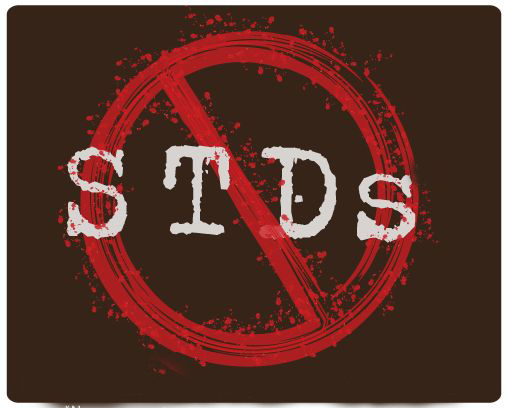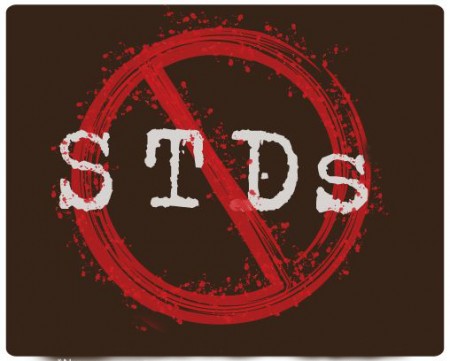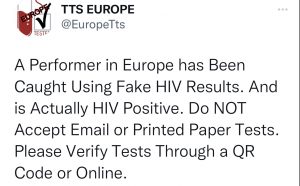By Brian Alexander, NBC News Contributor
Just in time for Valentine’s Day, researchers from the U.S. Centers for Disease Control and Prevention issued two new studies of sexually transmitted infections (STIs) today detailing what the lead author of one calls “an ongoing, severe, STI epidemic.”
The studies reveal new infection data, some of it available for the first time, for the eight most common STIs — chlamydia, gonorrhea, syphilis, herpes, human papillomavirus (HPV), hepatitis B, HIV, and trichomoniasis. The studies, which estimate infection rates and medical costs related to STIs, were published in the journal Sexually Transmitted Diseases.
Both are startling. In 2008, there were 20 million new incidents of infection in the United States, and a prevalence (new infections plus ongoing infection) of 110 million, according to CDC estimates. (Because one person may have more than one infection, the 110 million figure does not mean 110 million people have a sexually transmitted disease.) As a result, the United States incurred estimated direct medical costs of nearly $16 billion.
Previous such estimates, for years 1996 and 2000, estimated approximately 15 million and 18.9 million new incidents respectively, though these reports used somewhat different data sources and methodology so the CDC cautions against making direct comparisons. According to the Henry J. Kaiser Family Foundation, the American Social Health Association, and the CDC, the U.S. has the highest rate of STIs in the industrialized world.
“STIs take a big health and economic toll on men and women in the United States, especially our youth,” CDC epidemiologist Catherine Lindsey Satterwhite, who led the study of incidence and prevalence, told NBC News.
Although people age 15-24 account for only 25 percent of the nation’s sexually experienced population, Satterwhite’s study estimates they account for about half of all sexually transmitted infections.
Because every STI is preventable, Satterwhite argued, “we know that preventing STIs could save the nation billions of dollars each year.”
The story could have been different, insisted Matthew Golden, the director of Public Health Seattle and King County HIV/STD Program and a professor of medicine at the University of Washington Center for AIDS and STD. The good news, he said, is that rates for most viral and bacterial infections, including HIV, have stabilized or even dropped.
The “epidemic” Satterwhite speaks of, he said, is driven almost entirely by two bugs: HPV, and chlamydia. Chlamydia, a bacterial infection, is easily curable if it’s diagnosed. And there’s a very effective vaccine for the most dangerous forms of HPV that can trigger cervical, oral, anal, and penile cancers, and cause genital warts.
But, Golden argued, “we have snatched defeat from the jaws of victory” by not pursuing effective strategies, such as school-based universal access to the HPV vaccine.
Only about 35 percent of American girls age 13-17 had received the complete course of HPV vaccine as of 2011, according to the CDC. The rate among boys was about 28 percent. In comparison, Australia’s National HPV Vaccination Program provides the vaccine to girls at age 12 and 13 through their schools. As a result, 72 percent of girls have received a complete vaccine by age 15. (Boys were added to the program this year.)
Satterwhite’s study estimated 14.1 million new HPV infections during 2008 and a prevalence of 79.1 million, making it the most common STI by far. While the majority of HPV infections are cleared by the body’s immune system, some are not.
“How could we possibly have done this to ourselves?” Golden asked. “We have a solution; we have to make it happen.”
There were an estimated 2.86 million new chlamydia infections in men and women in 2008 and a prevalence rate of 39.9 million in women and 39.2 million in men, making it the second most common STI.
Because chlamydia can go undiagnosed if it doesn’t cause symptoms, and many young people are not routinely screened, cases can go untreated. This can result in pelvic inflammatory disease (PID) infertility, and ectopic pregnancies. A 2004 study from CDC epidemiologists and economists estimated that “costs per case of PID, including those associated with acute PID, chronic pelvic pain, ectopic pregnancy and treated infertility, range from $1,060 to $3,626.”
Meanwhile, STI prevention and awareness programs targeting other infections are also critical. For example, Satterwhite estimated 820,000 new gonorrhea infections in 2008. While the U.S. has largely escaped it so far, drug-resistant gonorrhea is slowly spreading around the world. Condoms offer protection against gonorrhea, as well as chlamydia, HPV and other STDs, something to consider before that Valentine’s Day date.
Brian Alexander (www.BrianRAlexander.com) is co-author, with Larry Young Ph.D., of “The Chemistry Between Us: Love, Sex and the Science of Attraction,” (www.TheChemistryBetweenUs.com), now on sale.







